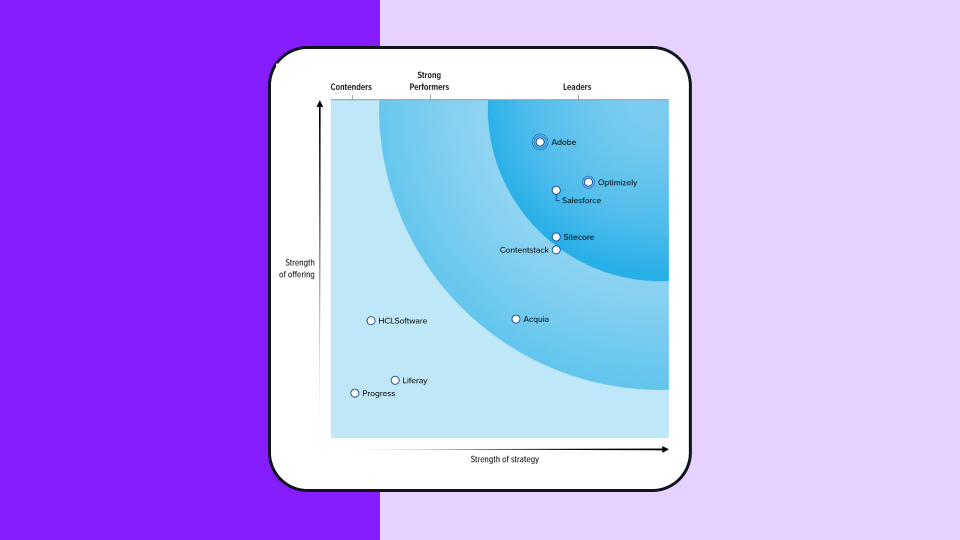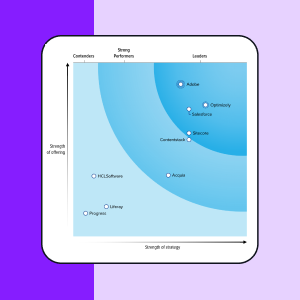Användarflöde
Vad är ett användarflöde?
Ett användarflöde är ett koncept för användarupplevelse (UX) som undersöker och dokumenterar de användaråtgärder som krävs av en typisk användare för att slutföra en definierad uppgift.
När användarflödet är klart beskriver det hur användaren tar sig från en startpunkt (eller flera startpunkter) genom en uppsättning olika kontaktpunkter och vidare mot ett lyckat resultat och en slutlig åtgärd, till exempel att slutföra en registrering.
Det finns inte ett sätt att bygga ett användarflöde, men många Product Managers och UX-designers bygger användarflödesdiagram genom att börja med mallar för flödesdiagram i verktyg som Figma, Miro och LucidChart.
Här är ett exempel på ett flödesschema från Balsamic:
Ett användarflödesdiagram ägs vanligtvis av produktchefer, användarupplevelse-team och designers och/eller produktutvecklingsteam för att bättre förstå användbarheten hos en webbplats, mobilapp eller mjukvaruprodukt.
Samtidigt är användarflöden till hjälp för alla intressenter för att förstå kundernas upplevelse av produkten. Andra team som kommer att ha ett intresse av användarflöden, men som inte äger dem, är bland annat
- Kundteam (försäljning, Customer Success/service, Account Managers)
- Team för produktmarknadsföring
- Bredare team inom Product Management, design och produktutveckling vars arbete är angränsande
Hur skiljer sig användarflöden från uppgiftsflöden eller en användarresa?
Alla dessa uppgifter är UX-flöden och är en del av att utveckla ett kundfokuserat tankesätt, men var och en av dem har ett distinkt syfte för produktlednings- och produktdesignteamen.
Här är en snabb översikt över skillnaderna mellan de tre uppgifterna:
| Uppgiftsflöde | Användarflöde | Användarresa (kundresa) |
| Enkel väg | Komplexa vägar | Inkorporerar data från uppgifts- och användarflöden i en kartläggning av kundresan |
| Inga ingångs- eller utgångspunkter | Innehåller in- och utgångspunkter | Bygger in problem och lösning i ett större sammanhang (både i produkten och genom att ta hänsyn till andra verktyg) |
| Sekventiell utan förgreningar eller beslutspunkter | Visar förgreningar, beslut och alternativ för att ta hänsyn till användarens val | Uttrycker den känslomässiga sidan av att använda produkten |
| Passar in i ett större användarflöde | Identifierar fokusområden baserat på möjligheter att överraska och glädja kunderna |
När bör du skapa ett användarflöde?
Är varje ny funktion eller UX-ändring värd att skapa ett användarflöde för?
Svaret är: det beror på.
Vi vet att många app-utvecklare inte prioriterar användarflöden, särskilt inte när man har en högkvalitativ prototypprogramvara. Och vi förstår att man tvekar inför att lägga till fler steg i processen, särskilt när resurser och tidsramar kräver att man effektiviserar byggandet.
Men när du har resurserna kommer du att vilja skapa ett användarflöde för alla nya funktioner eller betydande UX-förändringar.
Varför ska du göra det? För att ett användarflöde kommer att:
- Ge dina användare den mest intuitiva upplevelsen från dag 1
- Håller dig användarcentrerad och organiserad
- Hjälper dig att kontinuerligt skapa sömlösa upplevelser genom att se till att du dokumenterar, förstår och itererar från baslinjeinformation
När du zoomar ut till resten av dina intressenter kommer användarflöden att
- Hjälpa kollegorna att förstå användarna bättre
- Du kan arbeta närmare andra team för att hitta optimeringspunkter
- Anpassa användarflödena till den data som produceras av andra team
Vid vilken tidpunkt i designprocessen ska du skapa användarflöden?
Du vill passa in det efter den inledande användarundersökningen och upptäcktsprocessen och innan du skapar trådramen.
Genom att börja tidigt kan du använda det i kundundersökningar för att iterera utan att skapa en massa wireframes, wireflows och mockups med hög eller låg trohet.
Vanligtvis ser arbetsflödet ut så här:
- Avsluta användarundersökningen och skapa en analys
- Färdigställa uppgiftsflöden
- Skapa ett flödesschema för användaren
- Skapa low-fidelity mock-ups, wireframes eller prototyper
- Skapa ett trådflöde eller skärmflöde (valfritt)
- Påbörja användbarhetstest
- Iterera på ovanstående
Så här börjar du bygga ett användarflöde
När du har slutfört din användarundersökning och -analys har du fått den mesta informationen du behöver för att börja skapa ett användarflöde.
Men vilken är den mest relevanta informationen för den här övningen? Vår upplevelse är att de frågor som du behöver ta fram ur din analys inkluderar
- Vilka är användarens mål för uppgiften?
- Vad är viktigt för användaren och vad ger dem självförtroende att fortsätta?
- Vilken ytterligare information kommer användaren att behöva för att utföra uppgiften?
- Vilka är användarens tveksamheter eller hinder för att utföra uppgiften?
- Vilken är ingångspunkten?
Svaren på dessa frågor påverkar hur du utformar sidorna och avgör vilket innehåll och vilka navigeringslänkar som ska finnas med.
Om användarens primära mål till exempel är att bläddra bland olika artiklar kommer din sida eller skärm att ha en annan design och funktionalitet än om det primära målet är att köpa en produkt och gå vidare.
Hur många steg bör det finnas i ett användarflöde?
Svaret beror i hög grad på uppgiften, användartyperna och din vertikal.
Ett kortare användarflöde innebär inte nödvändigtvis en bättre upplevelse än ett längre användarflöde, särskilt om det missar potentiella användarinteraktioner eller förenklar användarnas mål.
Ett användarflöde för en landningssida kommer till exempel att vara mindre komplicerat än användarflödet för en app som erbjuder både freemium- och betalversioner.
Exempel på användarflöde
Användarflöden kan se ut på många olika sätt beroende på vilken typ av webbplats eller app du bygger. För en e-handelssajt kan ett typiskt användarflöde till exempel se ut på följande sätt:
- Användaren börjar på startsidan
- Från startsidan klickar användaren sig vidare till en kategorisida
- Från kategorisidan klickar användaren på en produkt
- Från produktsidan lägger användaren till artikeln i kundvagnen
- Från varukorgen checkar användaren ut
- Från skärmen för checkout slutför användaren köpet
I den verkliga världen kan användarna ta många olika vägar till köpet. I scenariot ovan kan användaren till exempel gå tillbaka till kategorisidan för att visa fler produkter i stället för att gå direkt till varukorgen. Eller så kan de använda sökning för att navigera på webbplatsen i stället för att klicka sig igenom webbplatsens hierarki. Eller så kan användaren komma in från en annan sida än startsidan.
Eftersom det finns många olika vägar som användarna kan ta modelleras användarflöden ofta som flödesscheman med noder för var och en av de viktigaste navigationsvägarna. Syftet med en användarflödesanalys är att identifiera de huvudsakliga användarflödena genom din app eller webbplats och identifiera områden där navigeringsflödet kan förbättras.
Gratis mallar för användarflöde att prova
Vill du snabbt komma igång med ditt användarflöde eller få hjälp att hålla dig på rätt spår? Det finns gott om kostnadsfria mallar för användarflöden som validerats av produktteam på några av världens mest användarcentrerade företag.
Här är några av våra favoriter:
- Product Schools mall för användarflöde
- Figmas mall för diagram över användarflöde
- Sketch's mall för diagram över användarflöde
Du kan också använda dedikerade verktyg som t.ex:
- Overflow - ett verktyg för användarflödesdiagram som animerar dina importerade användarflöden
- MockFlow - ett brainstormingverktyg som hjälper dig att visualisera dina idéer innan du dokumenterar dem
- Timblee - ett UX-planeringsverktyg som är utformat för
Glöm inte att ta hänsyn till läckande data
Genom att samla in data om varje steg i användarflödet kan du utvärdera hur användarna navigerar på din produkt eller webbsida. Det ligger i sakens natur att trattar krymper i varje steg där användare hoppar av. Data kommer att indikera var din tratt är "läckande" (med en stor andel människor som hoppar av mellan stegen) och kan behöva hjälp.
För att täppa till "läckorna" bör du fundera på var du kan åtgärda smärtpunkter eller friktion, var du kan erbjuda mer information och var du kan minska distraktionerna och erbjuda mindre.
På en e-handelssajt kan du till exempel göra en analys av användarflödet och märka att många kommer till varukorgen men inte slutför köpet. Genom att identifiera att övergiven varukorg är ett problem kan du börja generera hypoteser om varför användarna hoppar av vid den tidpunkten.
Det kan vara så att dina fraktpriser är för höga och att användarna får en chock. Eller så kanske det finns för många fält att fylla i och kunderna tappar intresset. Eller så är navigeringen inte tydlig när det gäller vilken åtgärd som ska vidtas härnäst.
När du har skapat en hypotes om varför ditt användarflöde inte är optimalt kan du börja med A/B-testning av dina idéer för att avgöra vilka av förändringarna som kommer att ha en positiv inverkan på användarflödet.
Hur A/B-testning kan bidra till att förbättra ditt användarflöde
A/B-testning är en process där två olika versioner av en webbplats eller app jämförs med varandra för att se vilken som presterar bäst med hjälp av verkliga data. A/B-testning är ett bra sätt att validera hypoteser om förändringar på webbplatsen eller i appen.
Genom att gå igenom dina användarflöden, identifiera förbättringsmöjligheter och testa olika idéer kan du kontinuerligt förbättra din konverteringsgrad.

